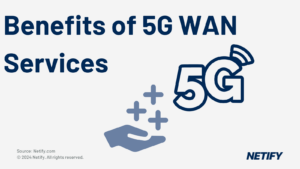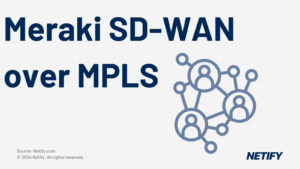Streamline remote work with SD-WAN: boost connectivity, enhance security, and ensure performance from anywhere with flexible, cost-saving solutions like SASE and Next-Gen Firewalls. 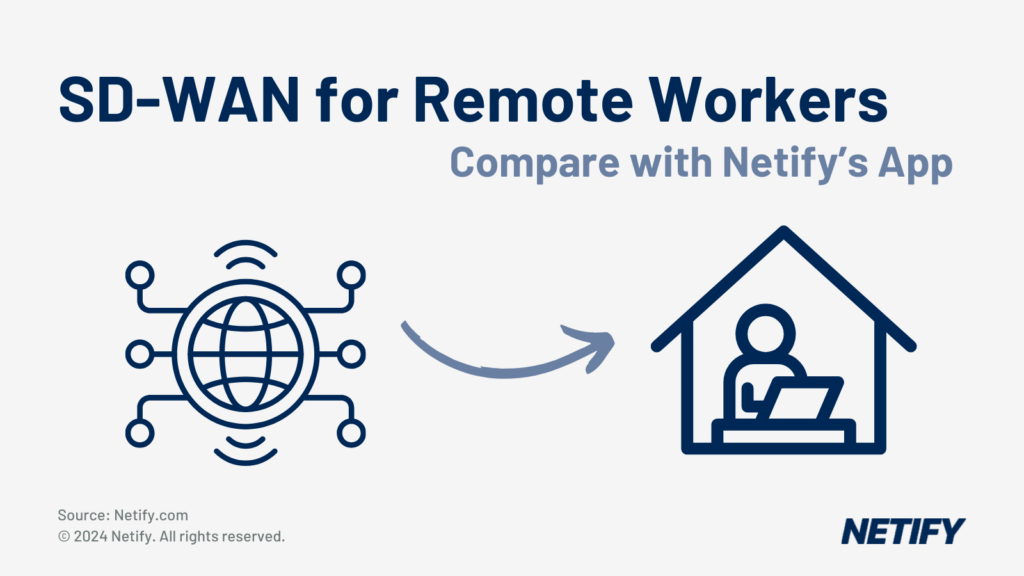
SD-WAN For Remote Workers - SD-WAN For Remote Workers
SD-WAN technology presents remote users with significant benefits regardless of their geographical location. These benefits include not only security but also reliable connectivity and performance. IT teams no longer have to waste valuable time managing sub-par performing VPN solutions and can now easily deploy and configure remote connectivity, leveraging technologies like Zero Trust to provision quick access.
With SD-WAN remote solutions, users are provided with the best possible connection to the corporate network at any time from anywhere. All of this whilst saving costs on legacy MPLS lines to remote sites and in a more secure manner with services such as Next-Generation Firewall (NGFW) and Secure Web Gateways (SWG).
Flexibility and reliability are enhanced when using SD-WAN as diverse link paths and multiple connection types are utilised. SD-WAN is capable of using connections such as MPLS, broadband and LTE (4G and 5G) simultaneously. This provides many benefits especially for remote workers who might not have the best broadband in their homes. For example, at 4pm when their children come home from school and start streaming Netflix or YouTube and eat up the home broadband bandwidth, SD-WAN can automatically boost the workers’ connectivity via their mobile phone network.
Thanks to the incorporation of SD-WAN within SASE, companies are able to provide remote access without compromising on security. With the ever-increasing threat of cyber attacks, this is a necessity. Having networking and security compiled into a singular product offering, most commonly from a single provider, is hugely beneficial in terms of management and visibility.
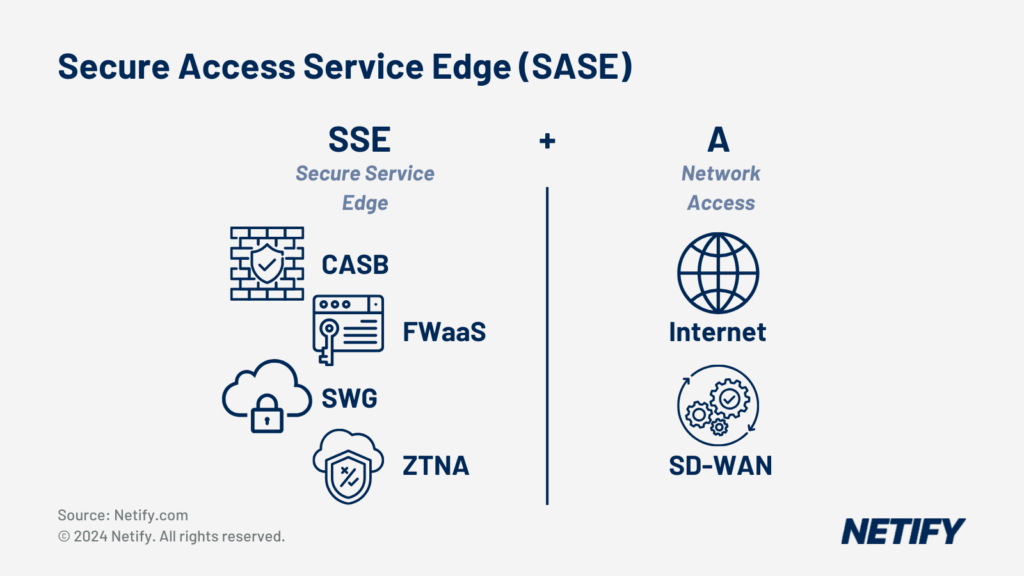
Secure Access Service Edge (SASE) is SSE + SD-WAN (Access). - Secure Access Service Edge (SASE) is SSE + SD-WAN (Access).
What Does SD-WAN for Remote Workers Offer?
SD-WAN remote access solutions ensure user application performance, uptime and security across 4G, 5G, and broadband, regardless of location. In addition, SD-WAN with remote access integrates SASE capability to offer next-generation firewall, encryption and threat protection.
How Does Netify Compare Remote Access?
Optimising Remote Access Performance
The Netify comparison tool understands how each SD-WAN and SASE remote worker solution supports bandwidth management, latency reduction, and packet loss to ensure high-quality connectivity for remote users, focusing on technical metrics that directly impact user experience.
Ensuring Remote Access Security
Our assessment prioritises SASE security for SD-WAN remote access. We’ve researched encryption protocols, identity management systems, and intrusion prevention mechanisms, ensuring that the solutions we recommend adhere to stringent security standards necessary for protecting remote communications.
Scalability for Growing Remote Workforce
Netify evaluates the scalability of SD-WAN and SASE solutions in the context of an expanding remote workforce. We consider network adaptability, resource allocation efficiency, and the ability to integrate new users and services without compromising performance or security.
What Are the Key Performance Indicators for Remote Access in SD-WAN?
Key Performance Indicators (KPIs) for remote access in SD-WAN include latency, bandwidth efficiency, packet loss, and Quality of Service (QoS). These metrics are needed to ensure that remote workers have seamless and efficient connectivity.
How Does SD-WAN Ensure Secure Remote Access for Workers?
SD-WAN ensures secure remote access through advanced encryption protocols, identity management, and consistent security policies across the network. These features protect data integrity and privacy for remote workers.
What Scalability Options Does SD-WAN Offer for a Growing Remote Workforce?
SD-WAN offers scalability through flexible bandwidth management and the ability to easily integrate new users and services. This adaptability is key for businesses with a growing number of remote workers.
How Does SD-WAN Support Application Performance for Remote Users?
SD-WAN supports application performance for remote users by prioritising critical applications, optimising bandwidth usage, and reducing latency. This ensures that remote workers have reliable access to essential business applications.
Can SD-WAN Solutions Integrate with Existing Network Infrastructures for Remote Access?
Yes, SD-WAN solutions can integrate seamlessly with existing network infrastructures. They are designed to be compatible with various network environments, ensuring a smooth transition and efficient operation for remote access.
Which Vendors Offer the Best SD-WAN for Remote Workers?
Cisco Viptela SD-WAN for Remote Workers
Viptela, one of the two SD-WAN offerings from Cisco, provides workers with safe and direct access into the corporate network. Their product, Cisco+ Secure Connect, combines reliable access with next-generation security features. Cisco’s remote access platform uses zero-touch provisioning to reduce the time required for configuration and maintenance of user connections. All of this can be centrally configured, managed and monitored using vManage and eliminates the need for multiple management portals.

Cisco Umbrella Features - Cisco Umbrella Features
With a strong focus on security, Cisco provides firewall protection with Secure Sockets Layer (SSL) encryption resulting in a safe connection for employees. Secure Connect provides customers with SASE tools such as DNS-layer security, Secure Web Gateway (SWG), Firewall-as-a-Service (FWaaS), Cloud Access Security Broker (CASB) and Zero Trust Network Access (ZTNA). The use of SASE decreases traditional security latency by eliminating the need for traffic analytics to pass through other services.
Cisco’s Viptela SD-WAN solution supports multiple link types including broadband and 4G/5G which ensures an uninterrupted service regardless of link failure. This results in a resilient service which increases the productivity of remote workers. Also, customers with existing Cisco SD-WAN infrastructure (Catalyst 8k, ISR 1000 & 4000 and ASR 1000) can implement remote access with no additional hardware cost.
Cisco Meraki SD-WAN for Remote Workers
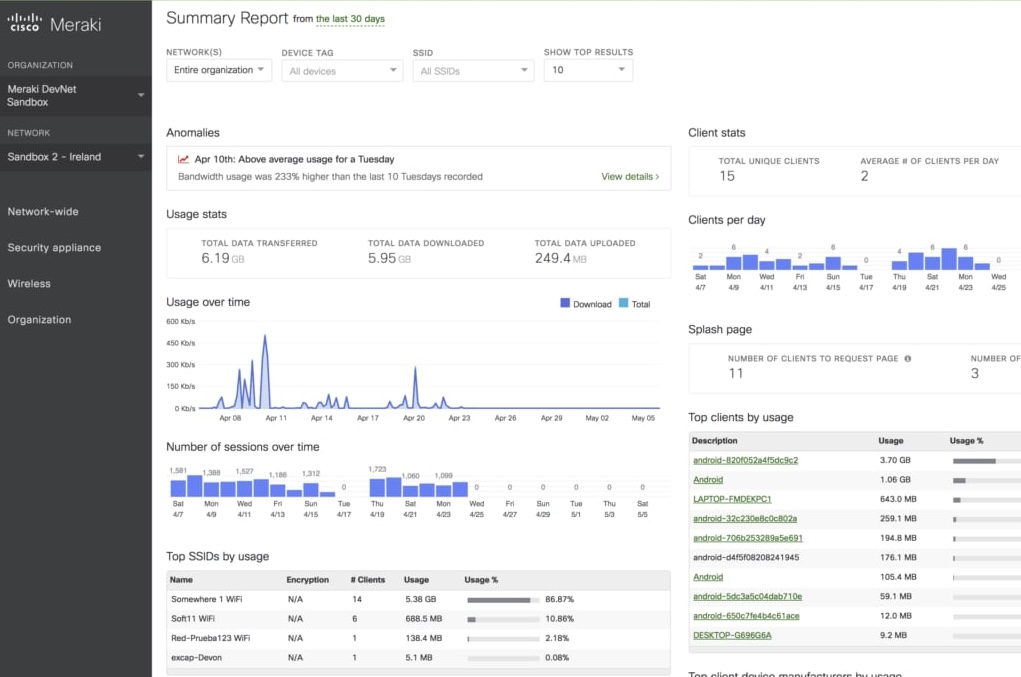
Cisco Meraki SD-WAN Solution - Cisco Meraki SD-WAN Solution
Meraki offers SD-WAN connectivity to remote workers in two ways, one being through the Z series hardware devices and the other being an IPsec VPN solution running on their MX appliances. The Z4 sits within the employee’s home and provides enterprise-grade firewall, router, VPN gateway and WiFi 6.0 services. This sleek designed device provides reliable connectivity for remote workers with features such as application-aware routing to prioritise high-bandwidth traffic such as video conferencing. Alongside policy-based routing (PbR) and dynamic path selection, the Meraki SD-WAN solution offers dual-active VPN uplinks which allow for multiple connection mediums such as broadband, LTE and MPLS. All of this and more is managed through their web-based dashboard.
Much like all other Meraki offerings, the SD-WAN solution is simple yet powerful. Zero-touch cloud deployment enables remote workers to set up the device with ease through a simple plug-and-play approach. Regardless of its overall simplicity, Meraki has enhanced security with built-in features such as next-generation firewalls, intrusion prevention system (IPS) and virus/malware protection. Meraki also supports integration with Cisco Umbrella to provide an overall SASE solution, ensuring the same level of security for users whether they’re in the office or working remotely.
Aryaka Solutions for Remote Workers
Aryaka’s SmartSecure Private Access allows for secure remote worker connectivity. This is reinforced by their high-performance network and their synergistic coverance. At the company’s core, their global network infrastructure provides the reliability for remote workers to benefit from consistent performance, irrespective of the user’s location. The architecture behind this network is uniquely designed to handle the demands of the modern, post-pandemic remote workforce. User experience is further enhanced due to strategically located worldwide access points that provide sub-30ms connectivity to 95% of users globally.
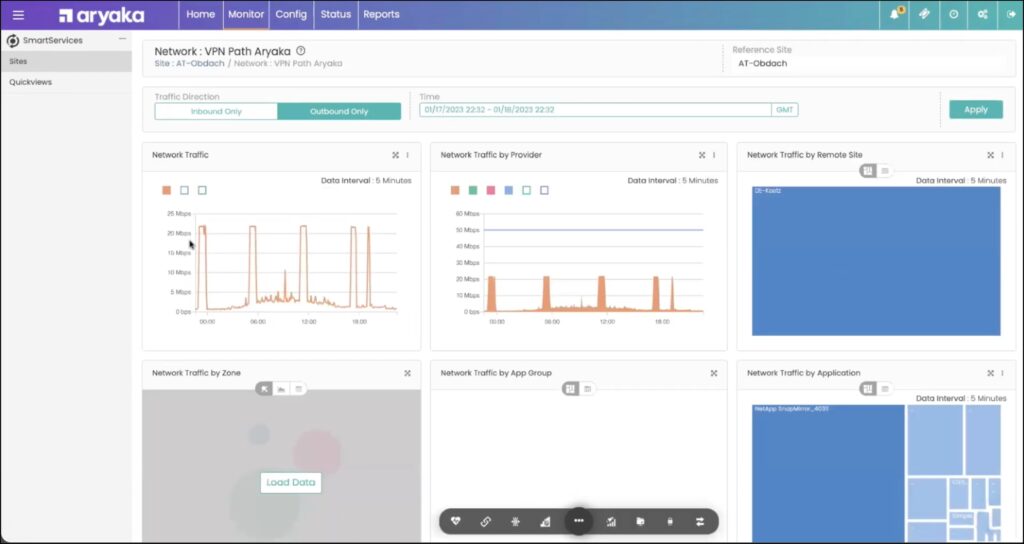
MyAryaka Reporting - MyAryaka Reporting
There are three key components within Aryaka’s operations; Private Access Clients (PAC), Private Access Nodes (PAN) and Private Access Managers (PAM). The PAC simplifies operations with an intuitive UI, high-level endpoint compliance and integrity within the corporate network. In turn, this allows for streamlining of the remote work setup and a seamless experience identical to working on site. This compatibility across multiple operating systems and devices ensures widespread applicability and the security costs/risks entailed with this are mitigated with strict VPN access. The PAN efficiently routes traffic across Aryaka’s core network to enterprises and cloud destinations, further ensuring security and performance. The WAN edge design supports multi-tenant architecture, encryption and integration with third-party security software. Finally, the PAM manages and authenticates network use.
Cato’s Approach to Remote Workers
One of the first providers to adopt SASE, Cato Networks offers a remote worker solution with a strong focus on security functionality. Cato SASE Cloud is their global service which enables remote users to connect to the WAN in a secure and optimised way. The Cato Cloud is a robust system which eliminates the need for a dedicated VPN service which requires precise configuration and maintenance. Instead of this, users connect to the nearest Cato Point of Presence (PoP).
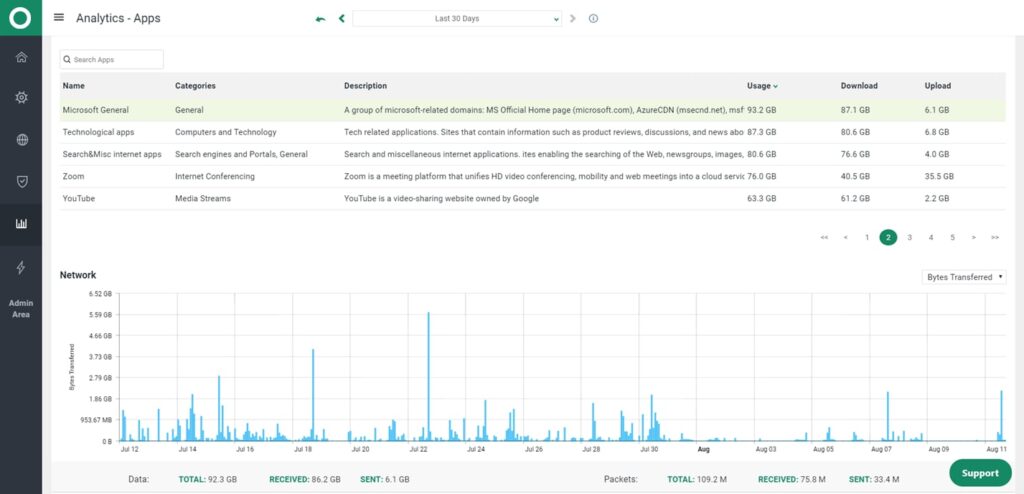
Cato Networks SD-WAN Reporting - Cato Networks SD-WAN Reporting
The SASE product encapsulates protection methods such as Next-generation firewall (NGFW) and secure web gateway (SWG) into a single offering. Also included are advanced threat prevention methods such as intrusion prevention system (IPS) and next-generation anti-malware (NGAM), paired with their threat detection service (MDR). Customers who utilise this benefit from enterprise-grade security across all locations and device types.
Users connect via their lightweight service, Cato Client, which can be installed on any device or accessed through a web browser. Having a web-based method of connectivity allows for any device (e.g. BYOD) to access the corporate network without compromising on security. From a cost perspective, Cato’s cloud architecture actually reduces the overall expenditure required to support traditional hardware deployments. All of this whilst also improving user experience by increasing overall reliability and availability.
Cato’s SASE architecture demonstrates a serious evolution in remote worker solutions. The burden of self-managing VPN systems whilst ensuring there are no gaps in your security are eradicated and replaced with a next-generation system. Its agile ability to adapt to a variety of remote working scenarios means that companies can enable employees to work securely from anywhere and any device.
VMware’s Remote Work Infrastructure
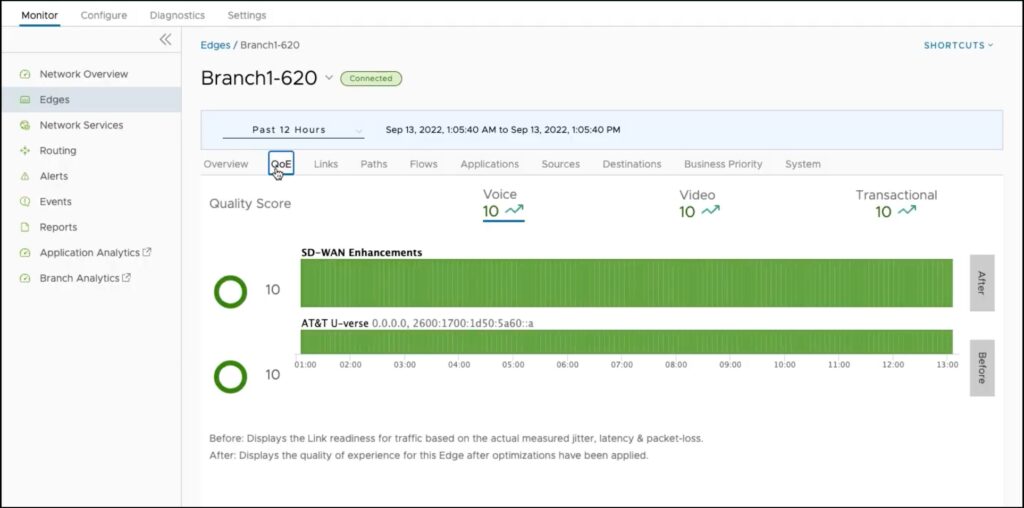
VMware Quality of Service (QoS) Setup - VMware Quality of Service (QoS) Setup
VMware has an SD-WAN solution which enables remote workers to connect in a reliable and secure manner. Their deployment process is intuitive and can seamlessly integrate with existing corporate VPNs. Organisations are able to accommodate remote workers without having to completely overhaul their existing infrastructure. VMware has integrations with services such as Salesforce and Netskope.
Known for virtualisation, it’s no surprise that VMware has a software-defined WAN offering called VeloCloud. This is a fully managed solution powered by their partners (GTT, BT and Lumen) who provide the backbone network, as VMware themselves don’t have a global network infrastructure to offer. Customers benefit from this as they receive a wider range of services from vendors with a global presence. Where they lack in network framework they more than make up for it in terms of software. VMware distinguishes itself from its competitors by providing a scalable infrastructure which meets the demands of all sizes of businesses. This scalable solution has no lack of security features, with NGFW and zero-trust being deployed through their SASE Platform.
Versa’s Remote Employee Solutions
Offering both SD-WAN and SASE solutions to over 1,000 enterprise customers, Versa caters for customers of all sizes. With this in mind, small to medium businesses can opt for the Versa Titan service which provides all the benefits of software-defined networking such as quick and easy site activation. Larger organisations are best suited for the more comprehensive Versa classic, but both solutions deliver high-performing network and security capabilities into an easy yet cost-effective package. With remote working in mind, Versa Secure Access allows organisations to enable employees to connect from anywhere without compromising on security. Versa’s solution offers high availability across their global distribution points via SD-WAN gateways. Remote workers connect via Versa’s SD-WAN service and experience better network performance through optimised traffic routing to applications such as Microsoft Teams video conferencing. Automatic streamlined management of the network reduces the input needed from IT teams allowing them to focus on strategic initiatives.
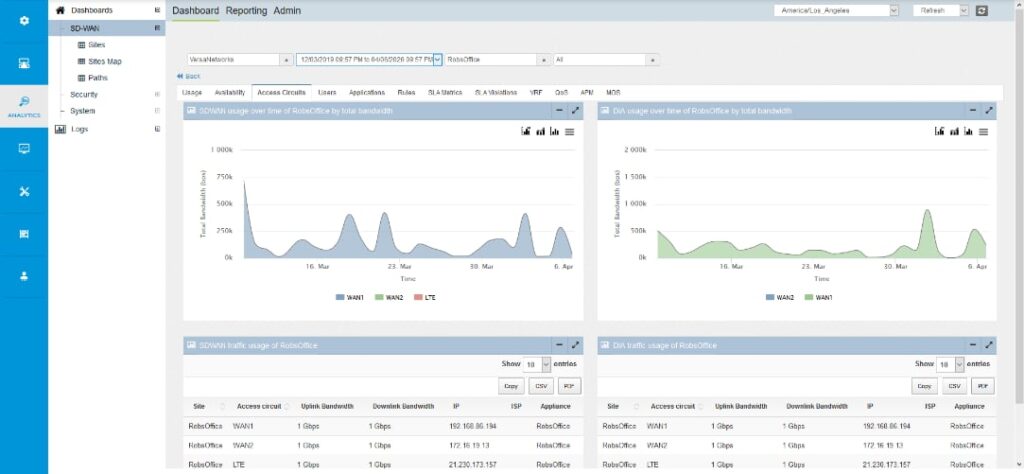
Versa has a strong security feature set and offers; stateful firewalls to monitor active connections and block unauthorised traffic, DoS protection, and Zero Trust Network Access (ZTNA) enabling organisations to enforce least-privilege access. This is all configured and managed via their portal, Versa Director, which allows granular insight into network analytics.
Palo Alto Prisma for Remote Offices
Palo Alto is a network solutions company who are known for their advanced security offerings and this is no different when it comes to protecting remote users. Prisma SD-WAN is their SDN product offering which simplifies overall network administration through machine learning and automation. Prisma SASE is their complete security offering which offers best-in-class protection through cloud-based firewalls.
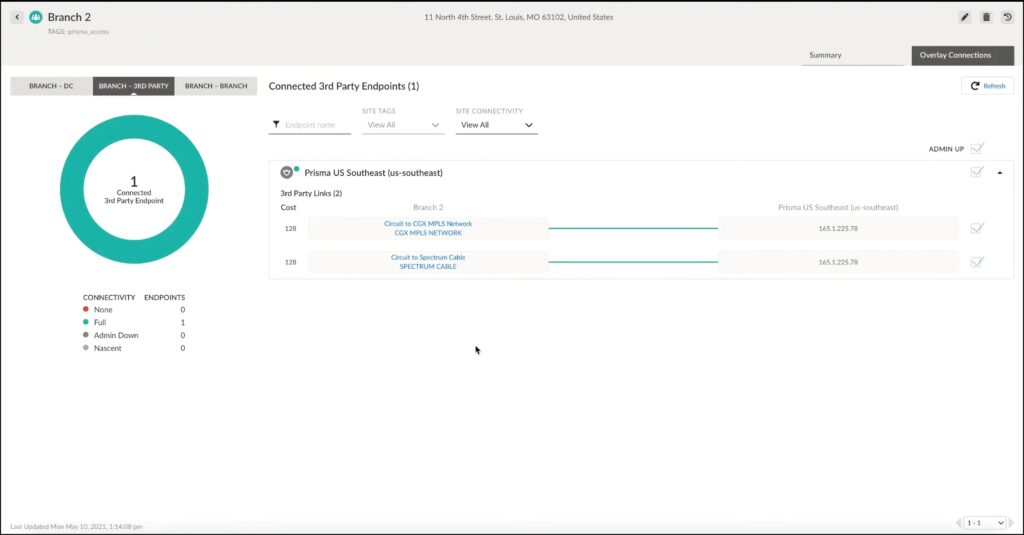
Palo Alto Prisma SD-WAN Link Health - Palo Alto Prisma SD-WAN Link Health
The Prisma services enable remote locations to benefit from optimal performance and enhanced business continuity. Some key features of Prisma are; automated deployment which allows for swift connectivity of remote users and sites, consistent security through their centralised management platform called Panorama and advanced security with their NGFW and ZTNA.
Unlike other SD-WAN solutions, Prisma encapsulates connectivity and security into a single solution. Organisations don’t have to worry about security gaps and complexity as Prisma automates and simplifies overall network operations. Palo Alto allows for flexible customisation of these services to ensure all businesses can be accommodated for.
Fortinet Solutions for Home Offices
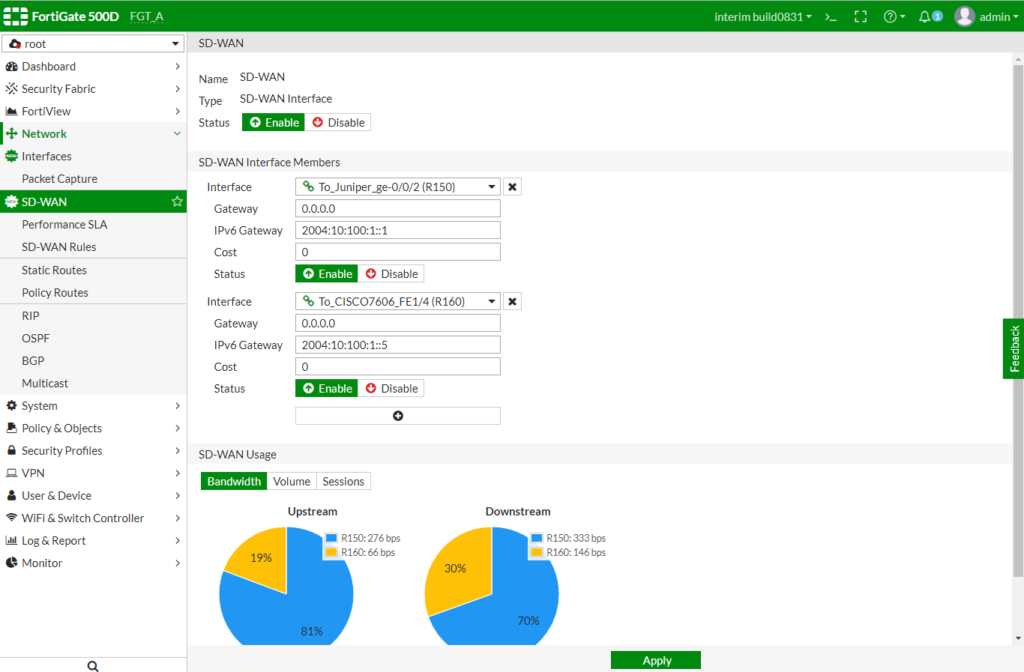
Fortinet Management Interface - Fortinet Management Interface
Fortinet is a cybersecurity company who also offer network solutions, unsurprisingly they stand out from the rest when it comes to security. They offer an SD-WAN solution called FortiGate which provides remote users with a secure and optimised connection into the corporate WAN. FortiGate allows for seamless cloud access and collaboration within SaaS applications such as Office 365. This is done in an optimised way allowing all bandwidth-intensive activities such as screen sharing to be prioritised. FortiGate devices are outfitted with the capacity to establish a VXLAN-over-IPsec tunnel, extending the LAN to a home office environment, minimising the individual configuration which previously would have been required.
FortiSASE is their scalable cloud-based security offering which integrates fully with FortiGate to provide secure connections. It’s a simple yet intuitive solution which guarantees the same level of protection for both on- and off-site workers. This is something that SMBs are struggling to apply and enforce. Their SASE solution closes security gaps with tools such as AI-powered SWG, ZTNA, CASB and FWaaS, all of which can be managed within a single console.
As opposed to others, Fortinet has a user-centric design and a deep understanding of remote worker needs. They are aware that employees need to be able to connect on any device from any location. This has resulted in a solution which is both technically sophisticated yet practical for the users.
Barracuda’s Offerings for Remote Staff
With Zero Trust Network Access principles in mind, Barracuda’s solution for remote workers is to provide a secure yet high-performing service via SD-WAN. Their SecureEdge offering is a testament to the evolution of network security and caters for all modern business requirements. As remote workers interact with cloud platforms and applications, ensuring a zero trust approach is essential. Barracuda takes great pride in their simple setup which is as follows; select the Barracuda CloudGen Firewall on your preferred platform (e.g. AWS), connect the CloudGen Firewall to our main location, then configure remote access via Zero-touch provisioning. CloudGen provides secure access to all applications on any device from any location. In result, the workers benefit from fast and seamless access to the corporate network without compromising security. They also offer SecureEdge which provides customers with enterprise-grade security including ZTNA, FWaaS and web security.
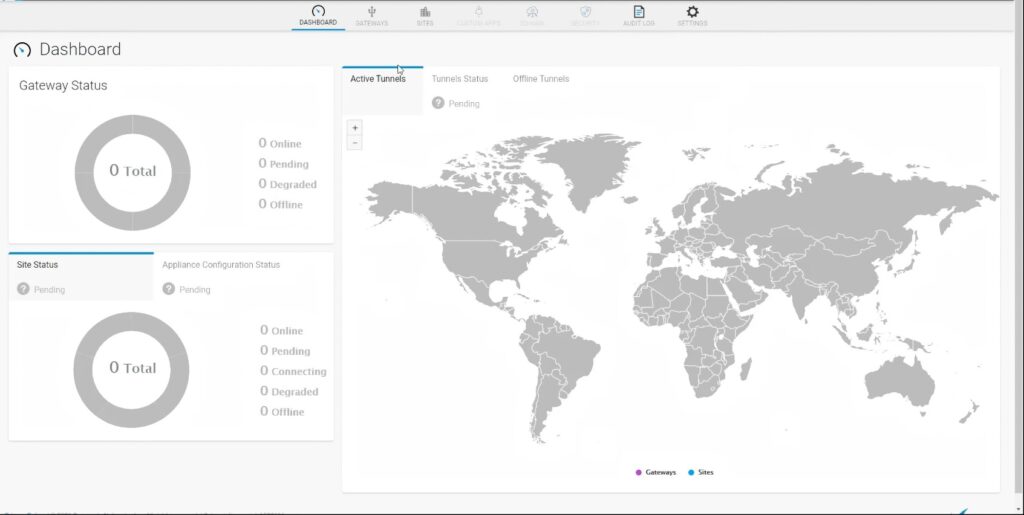
Barracuda SD-WAN configuration – Netify - Barracuda SD-WAN configuration – Netify
Barracuda outshines its competition in optimising the “last mile” of internet connectivity. This is achieved by employing advanced algorithms to identify and remediate packet loss, resulting in a superior remote worker experience. For ad-hoc access to the network, users on any device can access via their simple yet powerful web-based application, removing the need to install any software.
Masergy’s Remote Worker Solution
One of the early adopters of SD-WAN, Masergy has been delivering excellent services for almost 10 years. With a global network backbone providing coverage in over 100 countries they ensure 24/7 uptime thanks to their NOCs and SOCs. They offer both SD-WAN and SASE to reduce the need for multiple vendors. Their Secure Remote Access SD-WAN device allows for any home or remote user to be connected securely into the corporate network. Dynamic traffic shaping provides secure and dedicated bandwidth to business-critical applications whilst providing the highest level of security.
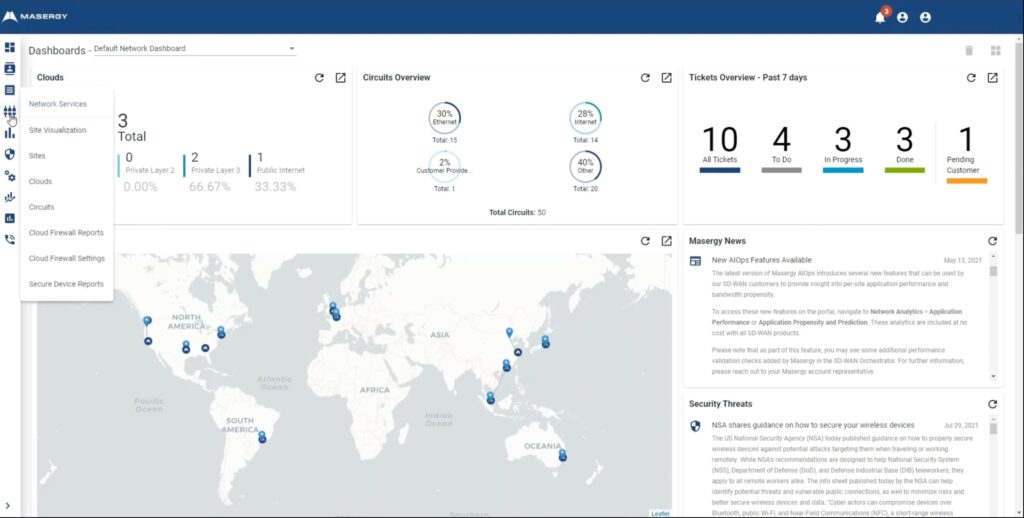
Masergy Dashboard Overview - Masergy Dashboard Overview
They have a dedicated “work from anywhere” product which extends all the benefits of SD-WAN to remote workers in any location. This combines SD-WAN and Secure Remote Access into a single service. Masergy SD-WAN On the Go is their software-only solution which enables secure remote access for workers using either corporate-owned or personal devices. It works by establishing a secure IPsec VPN tunnel with a SASE approach to secure, verify and detect any threats. They also offer a hardware solution, Masergy Secure Home, that seamlessly connects users’ homes to the corporate network. All of Masergy’s solutions provide customers with a secure and reliable service which utilises 4G/5G backup connectivity to ensure a 100% available service.
All of Masergy’s remote worker access methods are backed by their SASE application which provides network, cloud and endpoint security. Included in this is hybrid NGFW, SWG, CASB, IDS/IPS and endpoint detection and response services.
